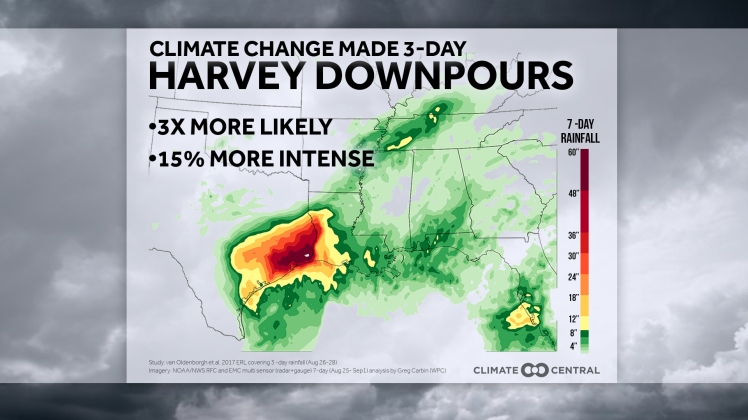More likely and more extreme is the tl;dr version of this.
The research presented Wednesday began soon after Harvey dumped feet of rain on the Houston area. World Weather Attribution — an international effort to analyze the potential influence of climate change on extreme weather events — decided to look at how greenhouse gases might have contributed to that extreme rainfall.
Studies have consistently shown that greenhouse gas-induced warming should increase the amount of rain that falls during a tropical cyclone, according to the paper.
“In general, the maximum moisture content of air increases with 6% to 8.5% per degree warming,” the paper states. “If relative humidity stays the same, which is the norm near oceans, the actual amount of water vapour in the air increases by the same amount.”
To examine this idea, scientists used multiple climate models to analyze the amount of rain that fell over a three day period (Aug. 26-28) in Baytown, compared to other three-day rain events dating back to 1880.
For the purposes of the paper, they focused on extreme rainfall as the main cause of the flooding and did not take into account the impact of other factors such as Galveston Bay’s sea level rise or the effect of Houston’s urban development on flood plains.
Those models showed that global warming over the past century has increased the severity of three-day rain events on the Gulf Coast, according to the paper.
The intensity of rainfall increased 15 percent during that time, the paper states, while the likelihood that this much rain would fall was increased three fold.
The paper itself is here. We’ve seen other research in recent weeks with similar conclusions, so this should come as no surprise. If you don’t believe the world is changing after what happened this summer, I honestly don’t know what might convince you. The Trib has more.

